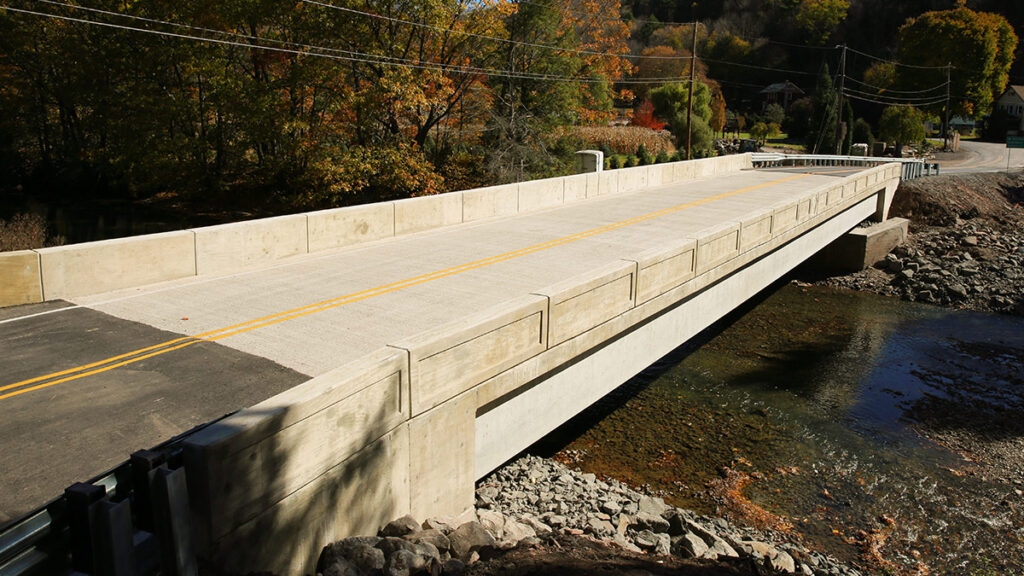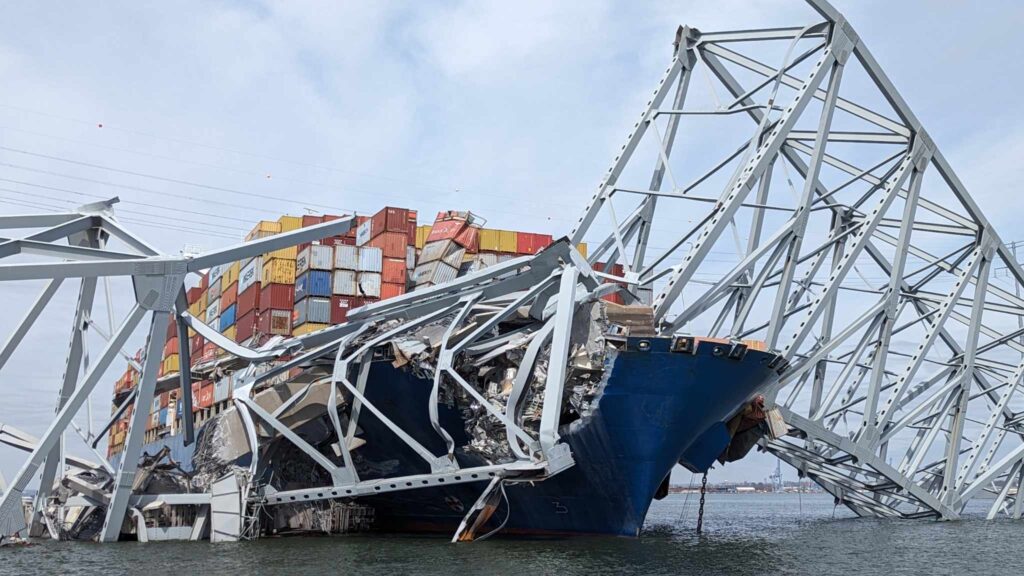An American Road & Transportation Builders Association analysis of the Federal Highway Administration’s National Bridge Inventory finds 220,295 U.S. bridges need repair, including 74,472 that should be replaced. 41,677 are currently rated in poor condition. If the bridges needing work were set end-to-end, they would stretch for roughly 6,100 miles. ARTBA pegs the price tag to address identified repairs at about $400 billion.
Road conditions point the same way. ASCE’s 2025 Report Card nudged roads up to D+, yet still notes that 39% of major roads are in poor or mediocre condition nationwide. Cost inflation is a further headwind: the Bureau of Transportation Statistics cautions that elevated construction costs have eroded the buying power of IIJA funding since 2021.
Congress set aside two headline pots for bridges with the passage of a historic 2021 infrastructure law: a $27.5 billion Bridge Formula Program distributed to states over five years, and a $12.5 billion competitive Bridge Investment Program—about $40 billion combined. As of mid-2025, states had committed a little over half of the bridge-formula dollars already released. That’s real money, but it’s not close to the estimated need, says Bob Hellman, the CEO of American Infrastructure Partners.
“The money doesn’t exist for these repairs, and time is running out to get them done,” he wrote last year. “Waiting for the next bridge collapse to respond is not a sign.”
Where Private Capital Can Help
Hellman believes that private infrastructure investment “could be a powerful economic stimulant without swelling public debt.” His case isn’t about replacing public funding so much as adding a complementary lane of finance and delivery that can move faster.
One frequently cited example is Pennsylvania’s Rapid Bridge Replacement program, a bundled public-private partnership that replaced 558 small, structurally deficient bridges under a single availability-payment concession. PennDOT reports construction was completed statewide and the private partner is now on the hook for long-term maintenance through 2042. FHWA’s project profile notes the state chose the model to speed delivery and capture lifecycle efficiencies at scale.

American Infrastructure Partners bridge-focused platform United Bridge Partners has demonstrated a similar concentrated approach to bridge development. The firm maintains approximately 40 professionals focused exclusively on bridge projects and has successfully completed four major bridge projects, each valued at over $100 million within four years.
The South Norfolk Jordan Bridge project illustrates this model in practice. When Chesapeake, Virginia, faced an estimated $200 million replacement cost for the deteriorating structure in 2008, with the city unable to afford even the $17 million repair cost, United Bridge Partners stepped in with a private financing solution. The project was completed for $143 million, nearly 30% less than the state’s estimate while simultaneously enabling $4.3 million in improvements to the adjacent Elizabeth River Park. Similarly, UBP’s Houbolt Road Extension project in Illinois improved transportation efficiency while delivering measurable environmental benefits, reducing annual CO2 emissions by 240.5 metric tons and cutting truck idle time by approximately 20,540 hours per year.
The federal programs, meanwhile, continue to award grants for large individual structures. But even with IIJA’s targeted bridge funds, ARTBA’s mid-2025 snapshot shows that tens of thousands of smaller spans, often on rural routes, still await attention.
‘Hard Truths’
None of this is a free lunch. Private financing requires durable revenue streams (availability payments, tolls, or dedicated appropriations), and public owners must lock in performance via long-term contracts and transparent procurement.
Hellman’s view is that the debate should start with the simple math that sufficient public funding is not available despite renewed attention to bridge and road repairs: “Citizens should have the ability to hear about these hard truths and make informed decisions about the future of their infrastructure.” Whether communities choose to use private capital or not, the choice is clearer when costs, timelines, and lifecycle obligations are explicit.
The Baltimore Key Bridge disaster briefly put maintenance on front pages, then attention moved on. The broader condition trend is slow-improving but still fragile: bridges earned a C, roads a D+, and extreme weather is testing older assets designed to past standards. In that environment, the pragmatic question isn’t public versus private—it’s how to combine federal programs, state dollars, and institutional capital to deliver more projects, sooner, with clear accountability for long-term upkeep.

Hellman’s essay ultimately lands here: if public dollars alone won’t close the gap, “private capital brings financial discipline” and can help move shovel-ready work faster, provided the public sector sets the terms and protects the public interest. It won’t solve everything, but it can take pressure off a backlog measured in the tens of thousands of structures.
Conclusion
The temporary focus sparked by the Baltimore Key Bridge disaster reminds us that deferring maintenance comes with devastating consequences, both human and economic. With 41,677 bridges currently in poor condition, waiting for the next failure is not a strategy. The simple truth is that inflation has eroded public funding, and the IIJA alone cannot close the $400 billion gap. By utilizing private financing and delivery models—like the successful P3s in Pennsylvania or the focused platform of United Bridge Partners—communities can access the needed capital to secure essential routes, reduce costs, and deliver projects faster. Ultimately, the question isn’t if public owners should engage private capital, but how quickly they can set the terms to leverage it, ensuring explicit accountability for long-term upkeep and delivering safer, more efficient infrastructure now.


